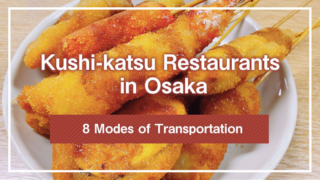Dazaifu Tenmangu is the head shrine of all Tenmangu shrines throughout Japan that enshrine Sugawara no Michizane, the deity of learning, and is located in Dazaifu City, Fukuoka Prefecture. With over 1,100 years of history, it is a famous destination that attracts many visitors from across the country during exam season. The shrine grounds are home to approximately 6,000 plum trees in full bloom, and there are abundant attractions including the legend of the flying plum tree and the sacred ox. Furthermore, the approach to the shrine is filled with gourmet options, including the famous “umegae mochi” (plum branch rice cakes).
This article introduces the history and highlights of Dazaifu Tenmangu, gourmet food that can be enjoyed around the tourist area, and access methods. Those visiting for the first time or planning a trip are encouraged to use this as a reference.
- 1. What is Dazaifu Tenmangu?
- 2. History of Dazaifu Tenmangu
- 3. Seven Highlights of Dazaifu Tenmangu
- 3-1. The Majestic “Romon” Gate
- 3-2. “Goshingyuu” (Sacred Ox) – Touch the Head to Receive Wisdom
- 3-3. “Shinjike” (Heart-Shaped Pond) and “Taiko Bridge” – Purifying Mind and Body
- 3-4. The Historic and Majestic “Dazaifu Tenmangu Main Hall”
- 3-5. The “Temporary Hall” Undergoing Major Renovation for the First Time in 124 Years
- 3-6. “Tobiume” (Flying Plum Tree) – Over 1,000 Years Old
- 3-7. Elegantly Formed “Kirin and Uso Statues”
- 4. Gourmet Food to Enjoy Around Dazaifu Tenmangu
- 5. Access to Dazaifu Tenmangu
- Conclusion
1. What is Dazaifu Tenmangu?
Dazaifu Tenmangu is the head shrine of all Tenmangu shrines throughout Japan associated with Sugawara no Michizane, known as Sugako, the deity of learning, and is located in Dazaifu City, Fukuoka Prefecture. With over 1,100 years of history, it is a popular tourist destination that attracts many visitors from all over Japan for prayers for exam success. The shrine grounds feature the vermillion-lacquered main hall, Tenkai Inari Shrine, the treasure hall, and the tourism history museum, creating an atmosphere rich with history and culture.
To the right of the main hall stands a sacred plum tree called “Tobiume” (Flying Plum), which is deeply connected to the legend of Michizane. In early spring, approximately 6,000 plum trees adorn the shrine grounds, captivating many visitors.
The shrine also offers abundant seasonal events throughout the year, including the fire festival in January and poetry gatherings in March. The approach to the shrine is lined with local specialties such as “umegae mochi” and pentagonal chikuwa, providing abundant enjoyment for tourists.
2. History of Dazaifu Tenmangu
The origins of Dazaifu Tenmangu trace back to the history surrounding the death of Sugawara no Michizane, a renowned scholar and politician of the Heian period. Born in 845, Michizane was blessed with scholarly talent, became a professor of literature at a young age, and eventually rose to the position of Minister of the Right.
However, in 901, he was demoted and exiled to Dazaifu due to political maneuvering by Fujiwara no Tokihira, and died there in 903 in disappointment. When transporting Michizane’s remains by ox cart, the ox stopped moving at a certain location, which was interpreted as Michizane’s will, and that spot became his burial site.
In 905, a mausoleum was built over the burial site, and Anrakuji Temple was established. Furthermore, in 919, shrine buildings were constructed by imperial decree of Emperor Daigo, marking the beginning of Dazaifu Tenmangu. The current main hall was rebuilt in 1591 during the Momoyama period by Kobayakawa Takakage under orders from Toyotomi Hideyoshi, and is designated as a National Important Cultural Property. As a deity of literature and learning, it continues to be revered today, with many students and people seeking academic achievement visiting the shrine.
3. Seven Highlights of Dazaifu Tenmangu
Dazaifu Tenmangu, boasting over 1,100 years of history, offers abundant attractions in terms of culture, architecture, and faith.
Within the sacred space that harmonizes with the scenery of the four seasons, landscapes that remain in visitors’ hearts unfold.
3-1. The Majestic “Romon” Gate
引用:太宰府天満宮
The romon gate of Dazaifu Tenmangu is a magnificent structure rebuilt in 1914. It was first constructed by Sugawara no Sukemasa, the great-grandson of Michizane, and has since undergone repeated destruction and reconstruction.The roof has a unique structure that appears as two stories when viewed from the taiko bridge side and one story when viewed from the main hall side, and was designed by Ando Tokizo, a master of modern shrine architecture. Its vermillion-lacquered appearance radiates dignity, and guardian deity statues watch over the worshippers.
3-2. “Goshingyuu” (Sacred Ox) – Touch the Head to Receive Wisdom
引用:太宰府天満宮
Within the grounds of Dazaifu Tenmangu, eleven “goshingyuu” (sacred oxen) that have deep connections to Michizane are enshrined.All are “recumbent ox statues” in reclining positions, and their origin comes from the story that when the ox carrying Michizane’s remains after his death in 903 stopped moving, a burial site was built at that location. It is believed that touching their heads bestows wisdom, and the statue in front of Enjuoin, created by Tominaga Chodo in 1985, has a back curve modeled after Mount Homan.
3-3. “Shinjike” (Heart-Shaped Pond) and “Taiko Bridge” – Purifying Mind and Body
引用:太宰府天満宮
The Shinjike pond at Dazaifu Tenmangu is said to have been created in 905 by Michizane’s disciple, Umisake Yasuyuki. Named after the shape of the Chinese character for “heart” (心), it is cherished as a pond that reflects the heart. The three taiko bridges spanning the pond symbolize past, present, and future respectively, expressing the Buddhist concept of the three worlds in one thought. By crossing the bridges, one purifies mind and body and prepares to approach the main hall. The scenery created by the lush camphor trees and vermillion bridges is also a highlight.
3-4. The Historic and Majestic “Dazaifu Tenmangu Main Hall”
引用:太宰府天満宮
The main hall of Dazaifu Tenmangu was rebuilt in 1591 by Kobayakawa Takakage, the lord of Chikuzen Province, and continues to convey the magnificent architectural style of the Momoyama period today.The cypress bark roof and intricate carvings are eye-catching, and it is designated as a National Important Cultural Property. This main hall began when a mausoleum was built over Sugawara no Michizane’s burial site in 905, and has inscribed a long history. Currently, major renovations are being conducted for the first time in 124 years, aiming for completion in 2026.
3-5. The “Temporary Hall” Undergoing Major Renovation for the First Time in 124 Years
引用:太宰府天満宮
The temporary hall of Dazaifu Tenmangu was designed by architect Sou Fujimoto in conjunction with the main hall renovations scheduled for completion in 2026. Inspired by the legend of the flying plum tree, the green-adorned roof harmonizes beautifully with the sacred forest of Tenjin, creating a sacred space for the Reiwa era. The temporary hall allows visitors to enter while wearing shoes and includes ramps, with a design that considers all worshippers. After the renovation is completed, the temporary hall will fulfill its purpose, and the trees are planned to be transplanted to the forest.
3-6. “Tobiume” (Flying Plum Tree) – Over 1,000 Years Old
引用:太宰府天満宮
The “Tobiume” (Flying Plum Tree) of Dazaifu Tenmangu is said to be the plum tree that flew from Kyoto to Dazaifu in a single night, as if responding to the waka poem composed by Sugawara no Michizane when he was exiled. The plum blossoms that Michizane dearly loved still bloom earliest in the shrine grounds, heralding the arrival of spring. The Tobiume is a double-flowered variety over 1,000 years old, and its fragrance and legend continue to captivate people’s hearts.
3-7. Elegantly Formed “Kirin and Uso Statues”
引用:太宰府天満宮
The kirin and uso statues were dedicated in 1852 by merchants from Hakata. The kirin is a sacred beast that symbolizes the appearance of a person of high virtue, and was created in connection with Michizane’s way of life. One statue that escaped metal collection during wartime still retains its form today. The uso is cherished as a bird of good fortune that changes “lies” (uso) into “sincerity” (makoto), and the “Usokai Shinji” ceremony is held annually on January 7th, attracting many worshippers.
4. Gourmet Food to Enjoy Around Dazaifu Tenmangu
The town of Dazaifu, where history and nature harmonize, offers many delicious specialties that warm the hearts of visitors. Japanese confections that reflect the seasons and local gourmet dishes made with regional ingredients further deepen travel memories.
From here, we will introduce recommended gourmet foods that can be enjoyed around Dazaifu Tenmangu.
4-1. Umegae Mochi
When speaking of Dazaifu specialties, “Umegae Mochi” comes to mind. Among the popular shops is Matsuya, located immediately to the right from the station. You can watch the mochi being grilled through the glass, and the aromatic fragrance often draws lines of customers. The thin skin with a grilled stamp contains hot, sweet red bean paste packed tightly inside, offering a crispy exterior and chewy interior texture. There is also an eat-in space, perfect for resting tired feet after walking.
4-2. Amaou Strawberry Daifuku Monaka
A winter treat you definitely want to try in Dazaifu is the Dazaifu sweet “Amaou Strawberry Daifuku Monaka” from Tenzan Dazaifu Store.This luxurious item uses a whole Amaou strawberry, Fukuoka Prefecture’s premium brand strawberry, wrapped in sweet red bean paste and soft mochi. The sweet and sour taste of the strawberry perfectly matches the deep flavor of the bean paste, and its adorable appearance makes it popular with tourists. It’s perfect as a companion for strolling and is extremely photogenic.
4-3. Dazaifu Burger
引用:大宰府唐揚げ筑紫庵
The “Dazaifu Burger” served at Chikushi-an Main Store near the approach to Dazaifu Tenmangu is a local gourmet dish that focuses on locally sourced ingredients. Fresh fried chicken is enhanced with pickled plum and sandwiched in fluffy buns together with homemade tartar sauce. Despite being hearty, it’s surprisingly light, making it perfect for a meal between sightseeing. The “Success Burger” is particularly popular not only with foreign tourists but also with students preparing for exams.
4-4. Pork Buns
At Yangzijiang Dazaifu Store, located very close to the “Dazaifu Burger” shop and distinguished by its eye-catching yellow exterior, the specialty pork buns are popular. These pork buns, which originated in Kokura, Fukuoka in 1958, feature hand-wrapped fluffy dough filled with juicy filling. The chewy texture from low-temperature fermentation and the irresistible meat juices enhanced with the sweetness of onions make this an exceptional dish. The unique style of serving with chopsticks is also convenient for eating while walking.
5. Access to Dazaifu Tenmangu
Dazaifu Tenmangu can be accessed by car, train, or bus. By car, it takes approximately 15-20 minutes from the Kyushu Expressway “Dazaifu IC” or “Chikushino IC,” and about 15 minutes from the Fukuoka Urban Expressway “Mizuki IC.”
When using public transportation, take the Nishitetsu Dazaifu Line from “Futsukaichi Station” on the Nishitetsu Tenjin Omuta Line to “Dazaifu Station” for about 6 minutes. The sightseeing train “Tabito” features gorgeous exterior and interior designs and can be boarded casually without reservations.
From Hakata Station or Fukuoka Airport, it takes approximately 50-60 minutes by combining the municipal subway and Nishitetsu trains. Furthermore, direct tourist buses operate from Hakata Bus Terminal and Fukuoka Airport International Terminal, providing comfortable access to Dazaifu Station.
Conclusion
Dazaifu Tenmangu is dotted with fascinating spots where over 1,100 years of history come alive. In addition to beautiful scenery including the vermillion-lacquered romon gate, taiko bridges, and the heart-shaped pond, there are abundant highlights such as the sacred oxen that bestow wisdom when you touch their heads and the legendary flying plum tree that blooms in early spring.
Since you can enjoy the scenery of each season, there are new discoveries every time you visit. It is the perfect place for those who want to spend quiet time while experiencing history and nature, or for those who wish for success in exams and academic achievement. Visit Dazaifu Tenmangu and spend special time experiencing Japanese tradition and touching the heart.
*This article is based on information available as of July 2025.






























